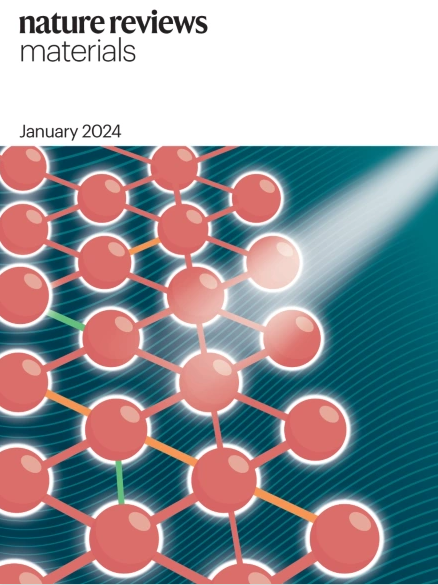Fluorination in advanced battery design
IF 86.2
1区 材料科学
Q1 MATERIALS SCIENCE, MULTIDISCIPLINARY
引用次数: 0
Abstract
The increasing demand for high-performance rechargeable batteries, particularly in energy storage applications such as electric vehicles, has driven the development of advanced battery technologies with improved energy density, safety and cycling stability. Fluorine has emerged as a crucial element in achieving these goals, owing to its hydrophobicity, robust bond strength and stability, exceptional dielectric properties and strong electronegativity and polarization. These attributes provide fluorinated battery components with high thermal and oxidative stability, chemical inertness and non-flammability. Importantly, fluorinated materials also facilitate the formation of a thin, protective film of corrosion products at the metal–electrolyte interface, which serves as a barrier against further chemical reactions with the electrolyte. Fluorinated species are now used in a wide range of battery components, including solid and liquid electrolytes, electrolyte additives, solvents, binders and protective layers for electrodes. This Review explores the design and utilization of fluorine-containing species in advanced batteries, focusing on the relationship between the chemical structure of the species and its impact on battery performance. Additionally, given the regulatory landscape surrounding the use of fluorinated compounds, we discuss the current challenges and future directions related to the responsible reuse and recycling of fluorinated materials in battery-related components. Incorporating fluorine into battery components can improve the energy density, safety and cycling stability of rechargeable batteries. This Review explores the broad use of fluorinated compounds in battery design, examines the relationship between their chemical structure and battery performance and discusses the challenges and opportunities of fluorinated batteries within the present regulatory framework.


先进电池设计中的氟化技术
对高性能可充电电池的需求日益增长,尤其是在电动汽车等储能应用领域,这推动了具有更高能量密度、安全性和循环稳定性的先进电池技术的发展。由于氟具有疏水性、强大的键合强度和稳定性、优异的介电性能以及较强的电负性和极化性,因此已成为实现这些目标的关键因素。这些特性使含氟电池组件具有较高的热稳定性和氧化稳定性、化学惰性和不可燃性。重要的是,含氟材料还有助于在金属-电解质界面上形成一层薄薄的腐蚀产物保护膜,作为防止与电解质发生进一步化学反应的屏障。含氟物质目前已广泛应用于电池组件,包括固体和液体电解质、电解质添加剂、溶剂、粘合剂和电极保护层。本综述探讨了先进电池中含氟物质的设计和使用,重点是含氟物质的化学结构与其对电池性能影响之间的关系。此外,考虑到围绕含氟化合物使用的监管环境,我们还讨论了与电池相关组件中含氟材料负责任的再利用和回收相关的当前挑战和未来方向。
本文章由计算机程序翻译,如有差异,请以英文原文为准。
求助全文
约1分钟内获得全文
求助全文
来源期刊

Nature Reviews Materials
Materials Science-Biomaterials
CiteScore
119.40
自引率
0.40%
发文量
107
期刊介绍:
Nature Reviews Materials is an online-only journal that is published weekly. It covers a wide range of scientific disciplines within materials science. The journal includes Reviews, Perspectives, and Comments.
Nature Reviews Materials focuses on various aspects of materials science, including the making, measuring, modelling, and manufacturing of materials. It examines the entire process of materials science, from laboratory discovery to the development of functional devices.
 求助内容:
求助内容: 应助结果提醒方式:
应助结果提醒方式:


